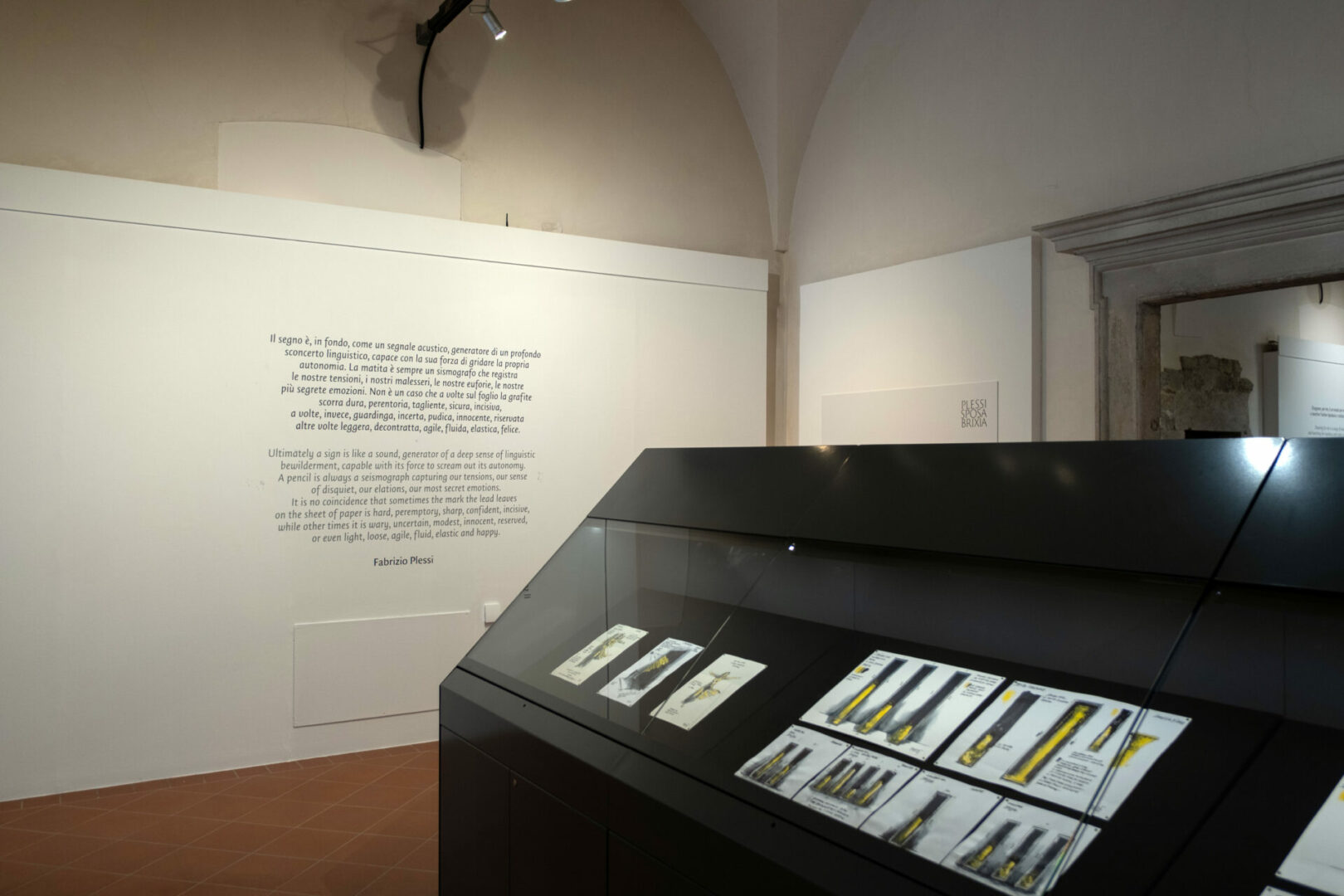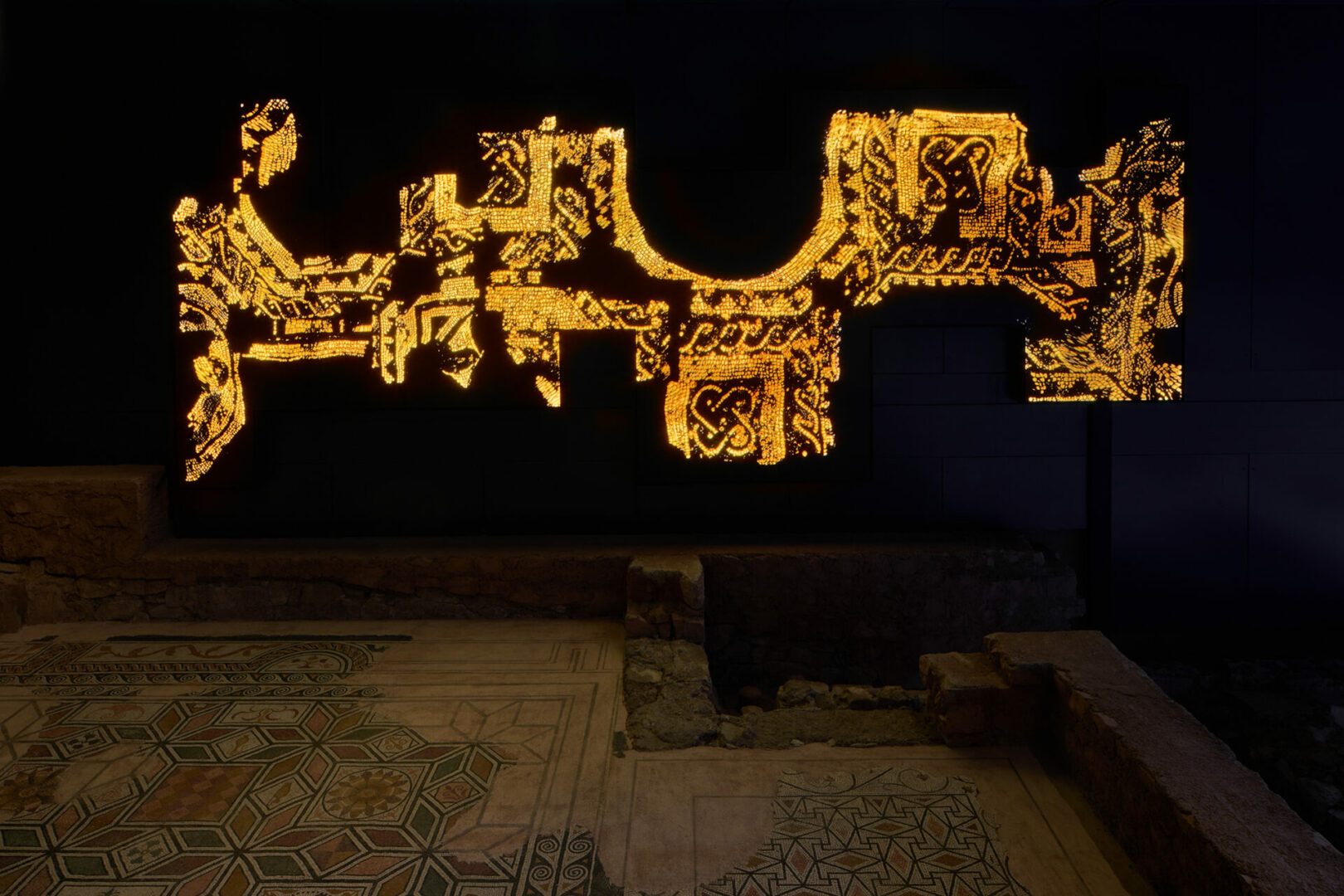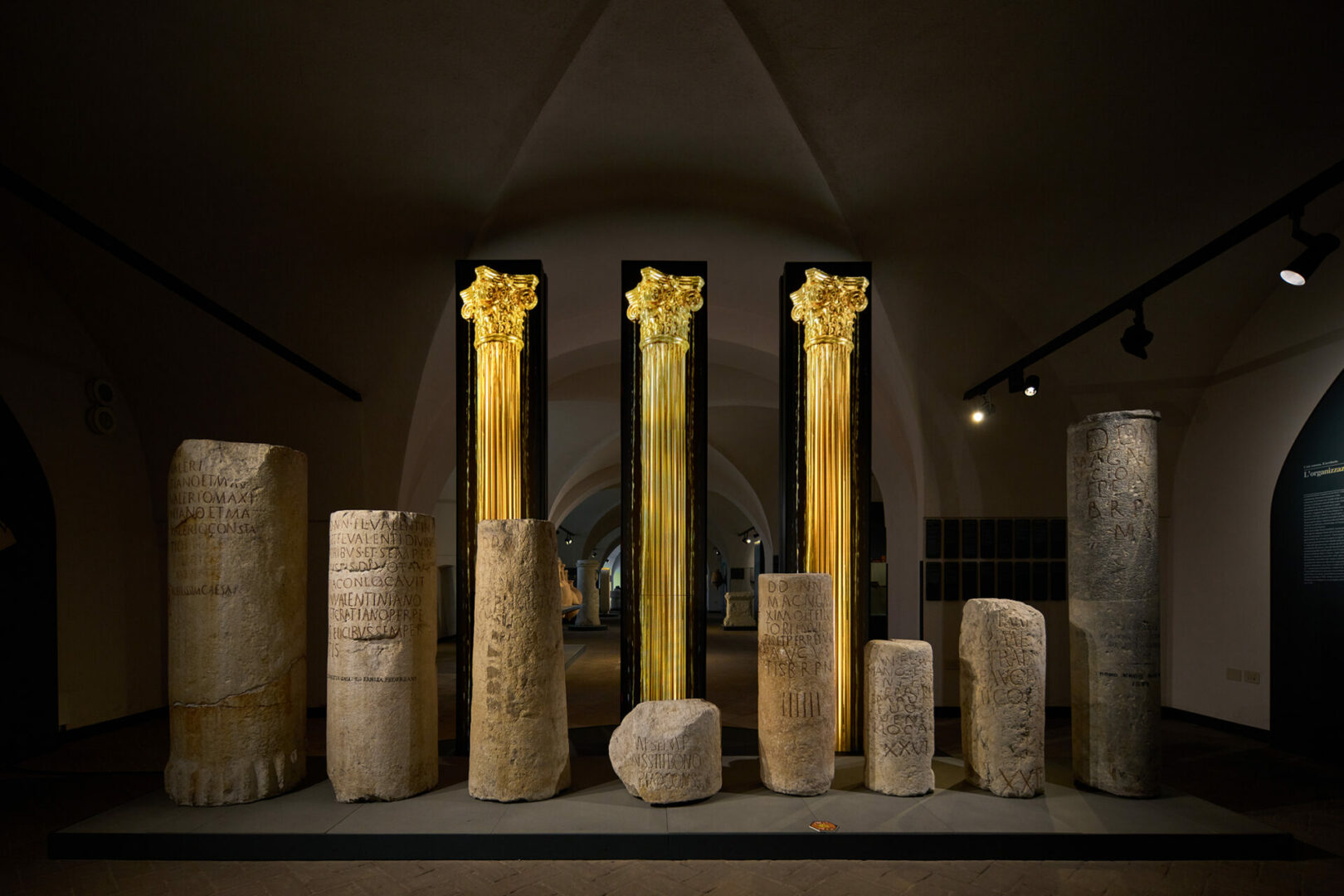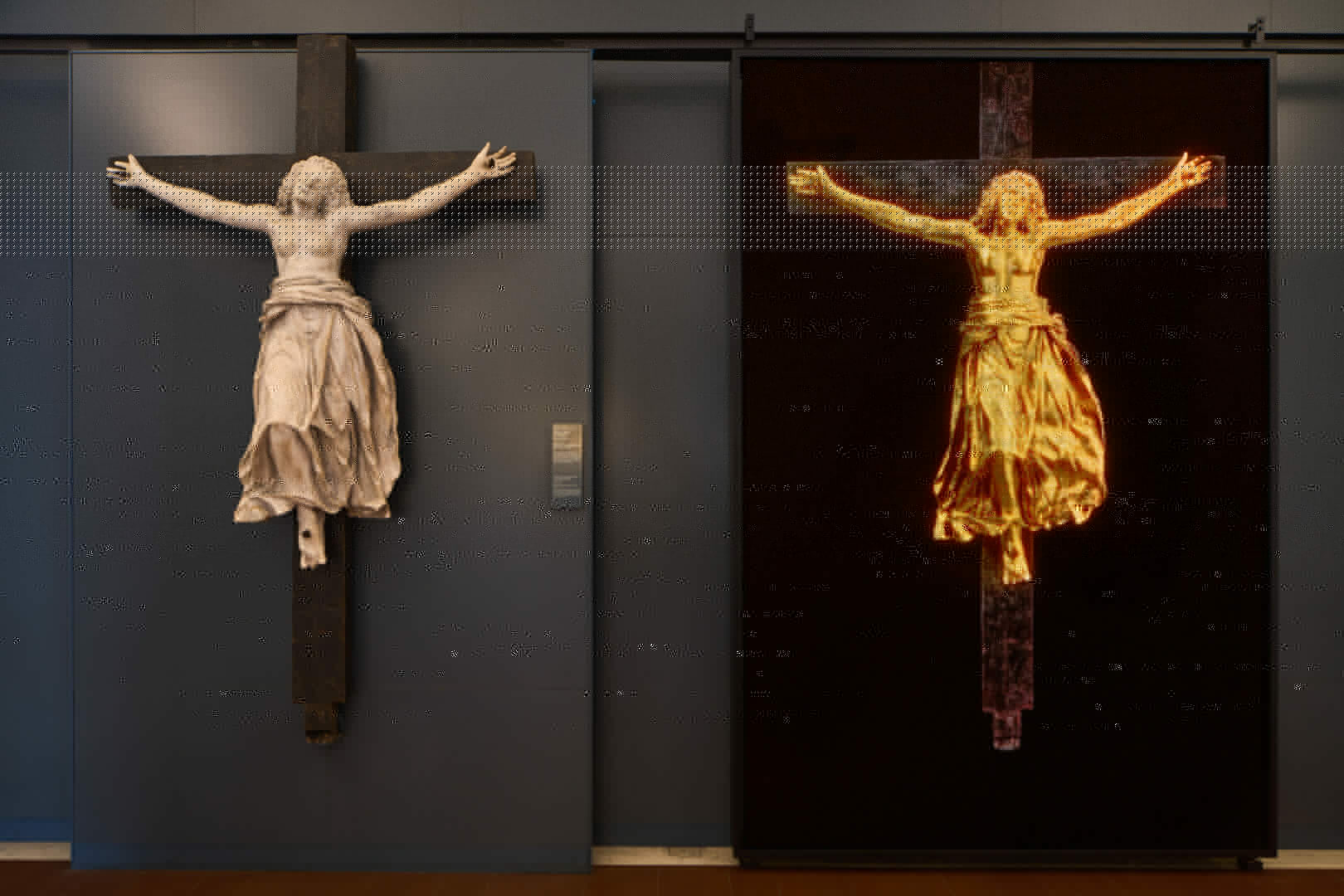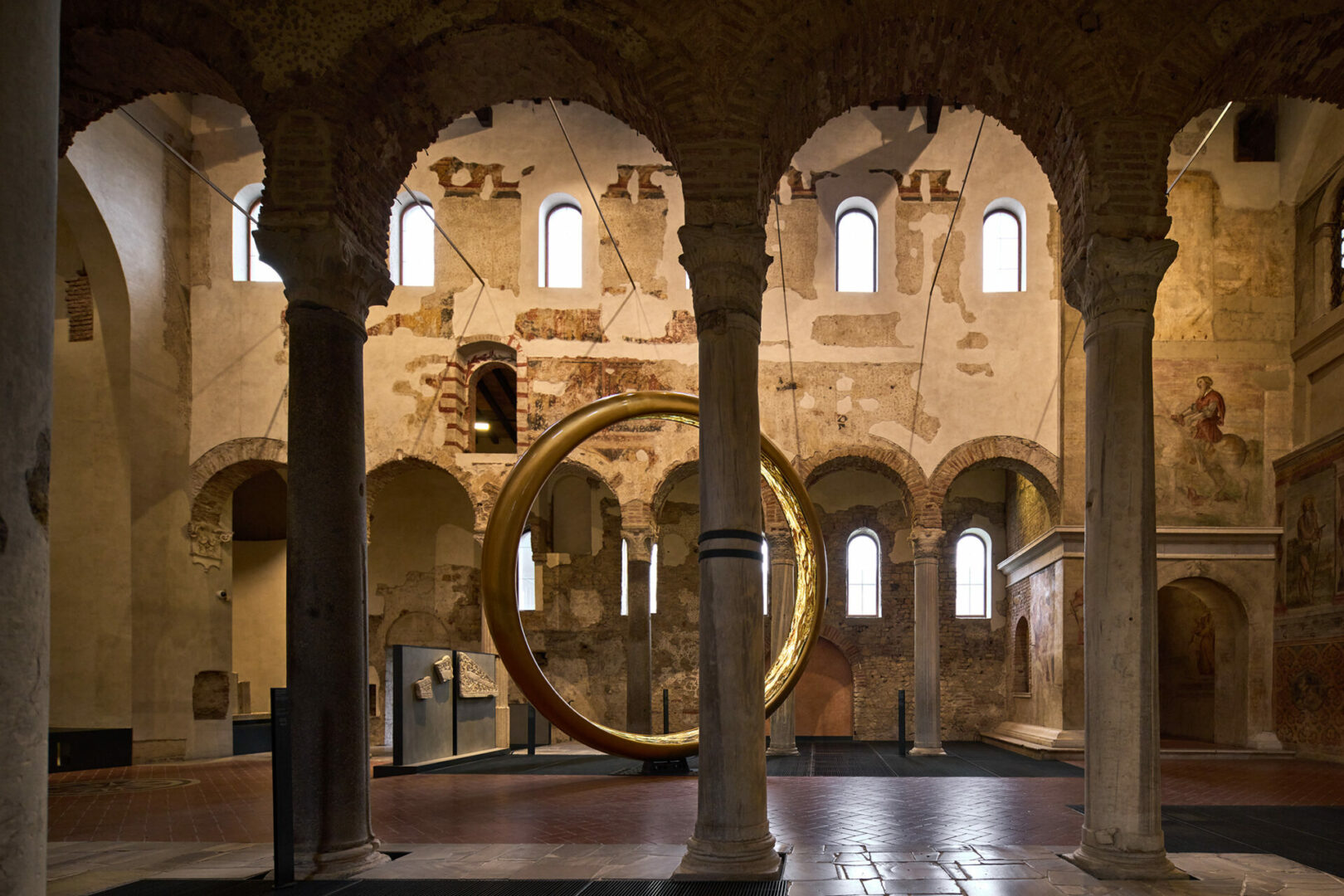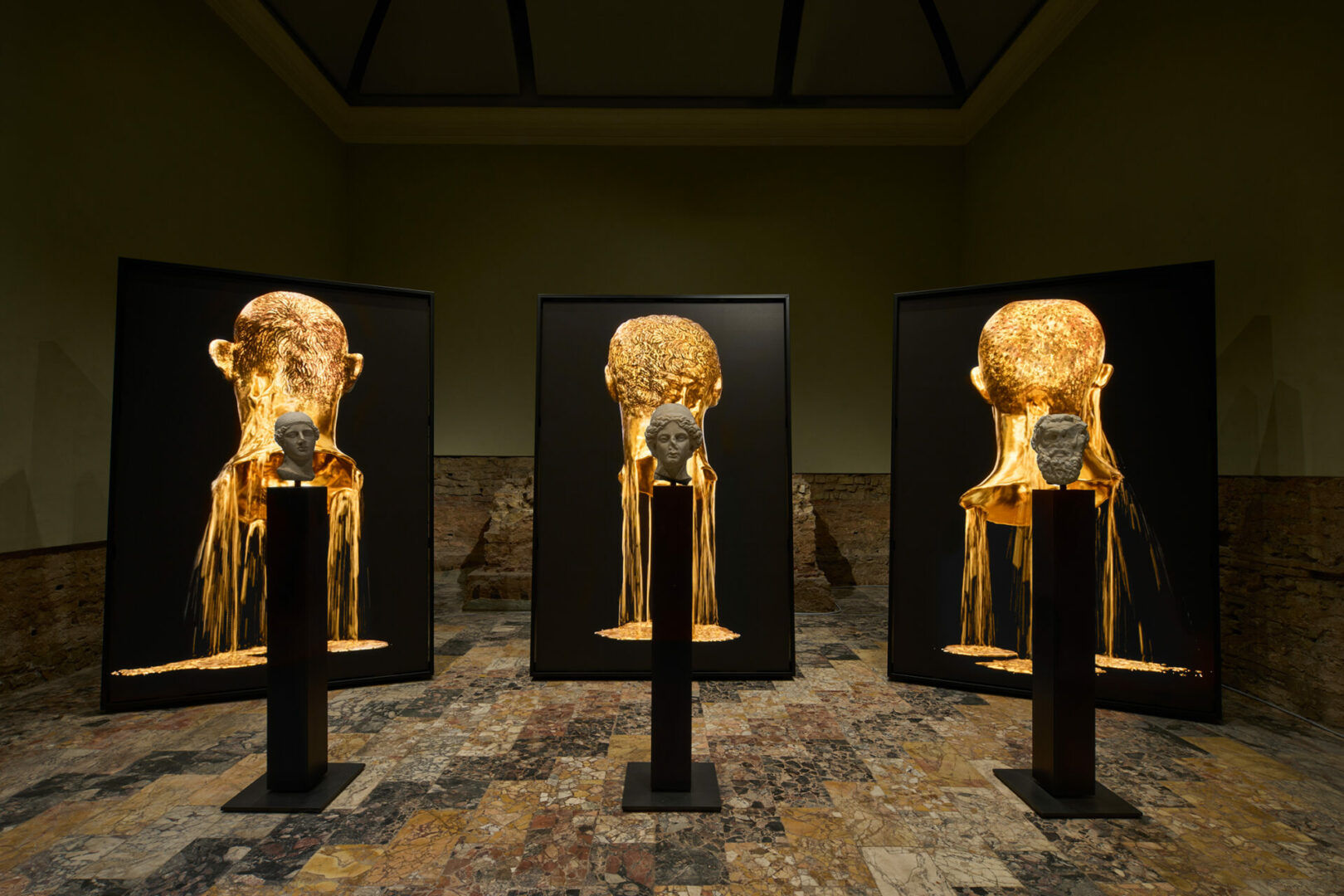Plessi sposa Brixia
From 09 June 2023 to 15 January 2024
The first major exhibition that the city of Brescia dedicates to Fabrizio Plessi: featuring digital installations, video projections and monumental digital walls aimed at creating an immersive and immersive journey of high technology, light, sound and moving images, specifically dedicated to the city's vestiges and heritage. This pioneering project is part of the exhibition format Archaeological Stages inaugurated with the monographs on Francesco Vezzoli (2021) and Emilio Isgrò (2022).
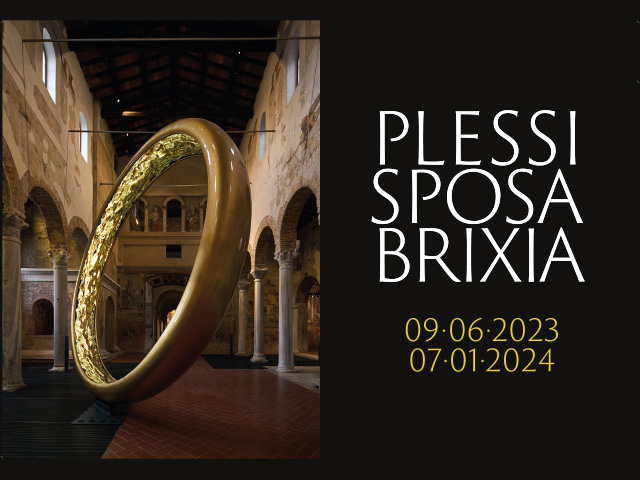
The exhibition
Curated by: Ilaria Bignotti
Produced by: Municipality of Brescia, Fondazione Brescia Musei, Alleanza Cultura
Media Partner: Giornale di Brescia, Radio Number One
Visit with: Abbonamento Musei Lombardia
The project proposed in the archaeological area of the Capitolium and in the Museum of Santa Giulia consists of an immersive and enthralling itinerary, of great scientific and cultural value, with a high visual impact and technological perfection, and is made up of digital installations, video projections and monumental digital walls: a journey that highlights the vestiges and heritage of our City, rewriting them with Plessi’s technological and multimedia alphabet, with light, sound and moving images. The exhibition, which is part of the format Archaeological Stages, consists of a diffuse and site-specific exhibition in the museum complex of San Salvatore and Santa Giulia, in the Capitolium and in a collection of the project boards in the Fresco Rooms and in the entrance hall.
The project is part of and crowns the research that the artist has been conducting in recent years, defined by Plessi himself as “The Golden Age” and translated, in September 2020, into the monumental digital installation on the windows of the Correr Museum in St. Mark’s Square, supported by Dior and consisting of large golden cascades that emotionally dialogue with the mosaics of St. Mark’s Basilica.
The Artist
The fundamentals of Fabrizio Plessi’s artistic research
Fabrizio Plessi is the pioneer of video art and video installations in Italy and is considered an international protagonist of research on new electronic and digital technologies and new media art: from 1968 to the present, he has developed coherent and rigorous cycles where central is the dialogue between the potential of electronic and digital technologies with the heritage of material and immaterial culture, in an attempt to investigate the persistence of the values of the past in the present time and as a legacy for the future.
The history of humanity, the vestiges and traces it has left over time, the forms by which power, glory, beauty, victory, death, salvation, hope have been represented and transmitted, the analysis of the image-icon and the problem of the relationship between the work and the environment, the debate on the concept of monument, modernism, post-humanism, are at the center of Fabrizio Plessi’s investigation, who on several occasions has pointed out how much his design is aimed at “bringing together the elements linked to the artistic tradition with the technological iridescence.” His artistic and academic career accounts for this perspective: a lecturer in Humanization of Technologies for ten years and in Electronic Scenography at the Kunsthochschule für Medien in Cologne, his work has been exhibited in the most important international museums, from the Centre Pompidou to the Guggenheim Museum in New York, and is present in the most important art events, from Documenta in Kassel to the Venice Biennale.
In the last three years Plessi has developed a crucial investigation where the colors of gold and black are elected as vectors of an ideal conclusion of the alchemical and digital process of the elements of Water, Earth, Fire and Air and the Foundations of human history, in an iridescent staging of the transformation and regeneration of art as a manifestation of human culture and identity: an investigation that is nourished, also, by a deep reflection on Vanitas and the human tragedy of the last period, caused by the pandemic and wars.
The Artworks
information
Tickets
Access to the exhibition Plessi sposa Brixia requires the purchase of a UNESCO ticket, which also allows access to Brixia Roman archaeological area and the Museum of Santa Giulia.
The UNESCO ticket is valid for 3 days (until midnight on the third day) from the date of issue, during which time n.1 entrance will be allowed for each of the two museum venues.
Entrance tickets
Opening times
Summer timetable (1 June – 30 September):
- Mondays (non-holidays): Closed
- Tuesday, Wednesday, Thursday, Friday, Saturday, Sunday: 10.00 a.m. – 7.00 p.m.
- Last admission: 6.15 p.m.
Winter hours (1 October – 31 May):
- Mondays (non-holidays): Closed
- Tuesday, Wednesday, Thursday, Friday, Saturday, Sunday: 10.00 a.m. – 6.00 p.m.
- Last admission: 5.15 p.m.

